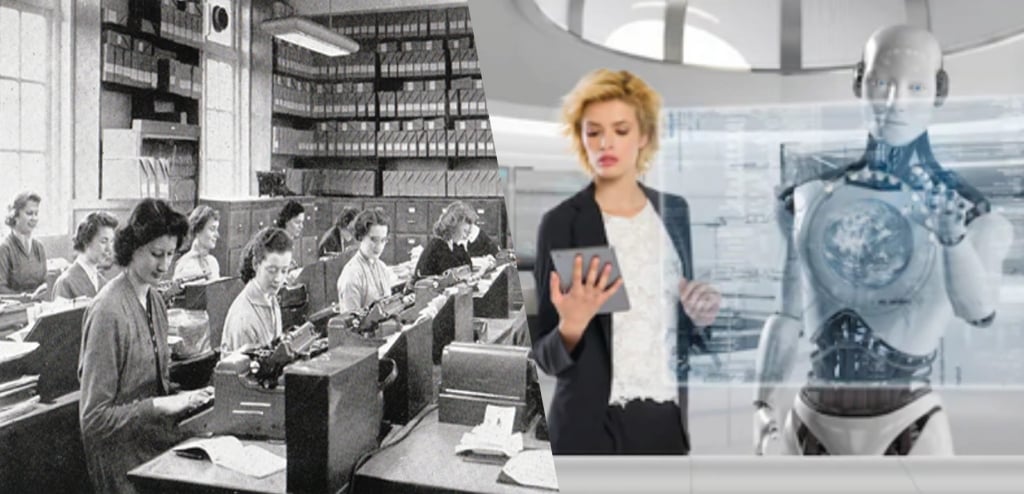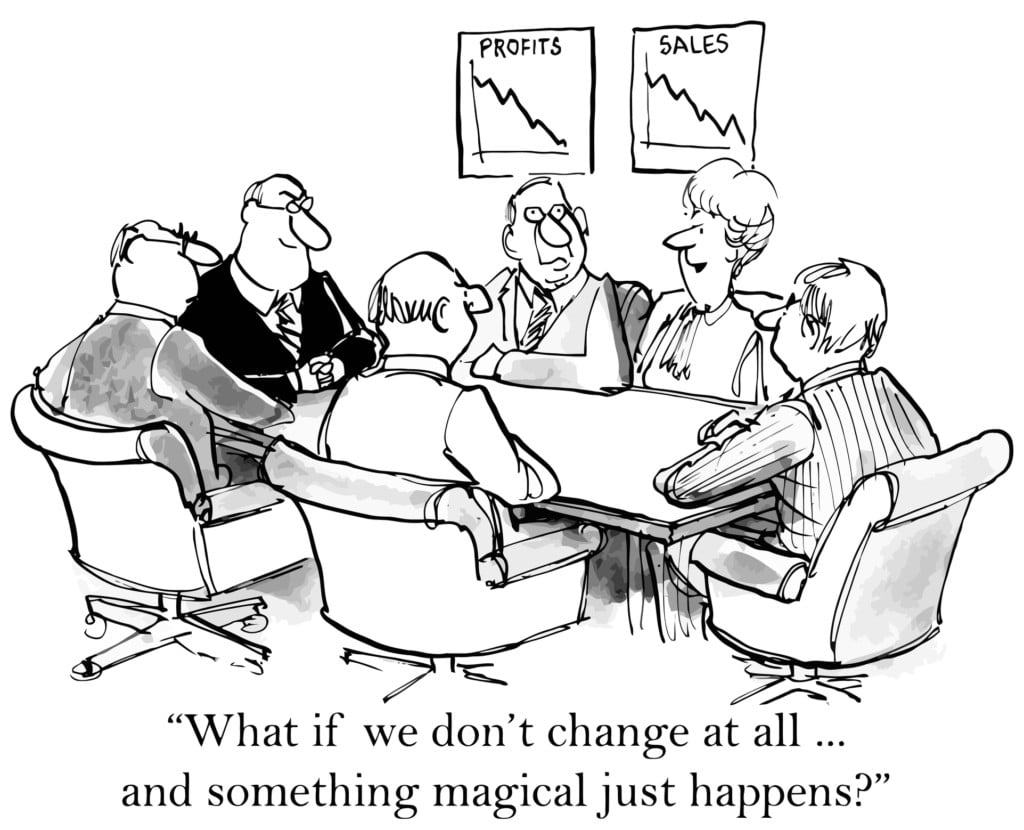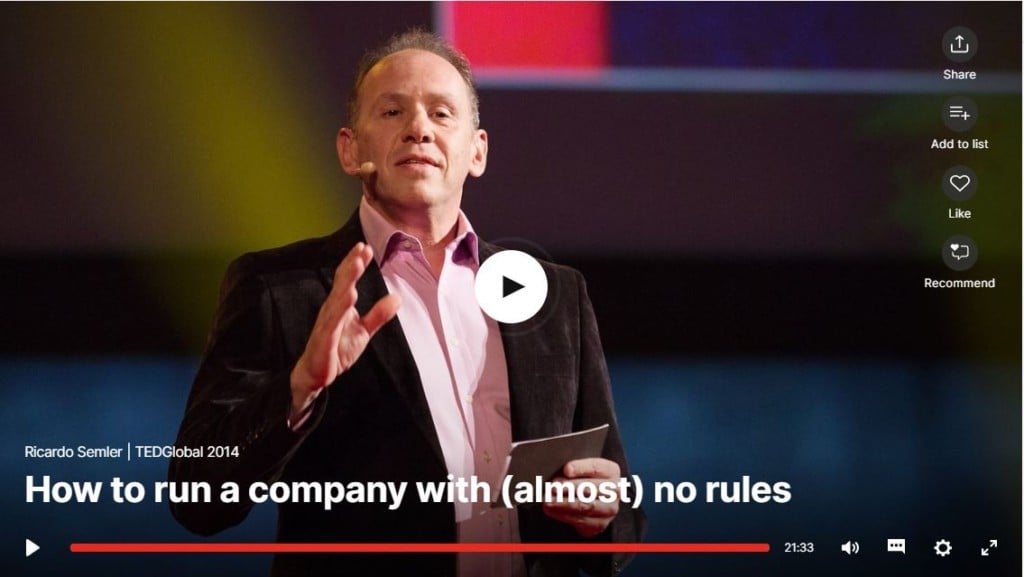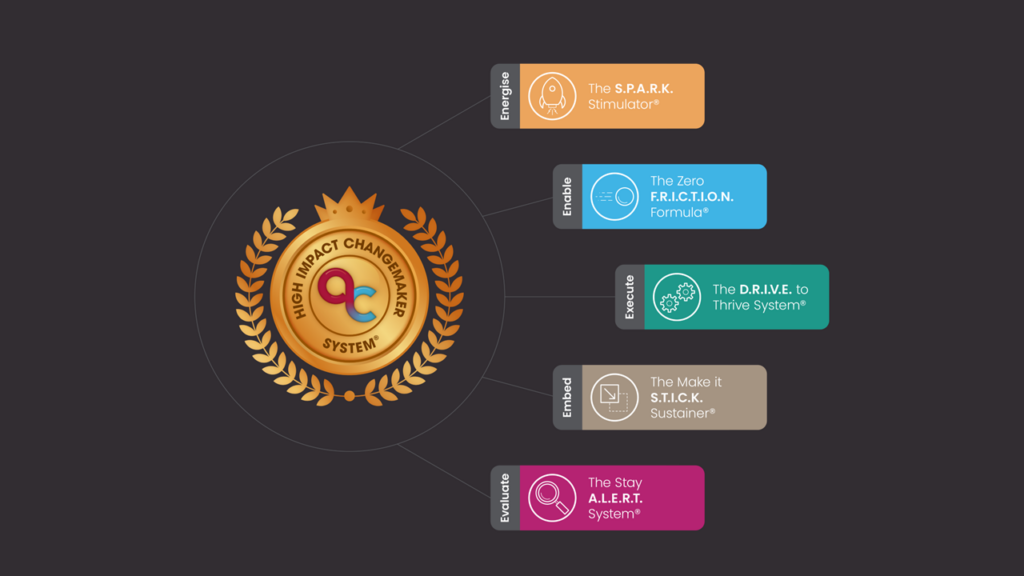A new game needs new rules
By Mark Vincent
Share

The fixed hierarchical organisations commonly used today were initially developed at the end of the 19th Century. Their roots can be traced to Frederick Taylor’s scientific management theory and his learning from the steel industry, along with the pioneering work of the Ford Motor Company. The problem they were solving back then was how to take groups of relatively unskilled people and have them operating at scale, whilst simultaneously improving consistency, efficiency and productivity. It has served us very well while the direction of travel has been relatively stable and predictable, but that isn’t the world we live in now.
Technology and globalisation are driving a pace of change that is unrecognisable, even compared to 20 years ago and the future is far less predictable. The levels of innovation and adaptability needed to deal with this uncertainty are forcing us to rethink how we collaborate and organise ourselves. We are already seeing the increasing adoption of more fluid structures with far quicker decision processes taken by expert teams with high autonomy.
Companies such as WL Gore, Spotify and many others have been pioneering new ways of organising themselves for some time. They have recognised that, when leading highly skilled people in a fast paced environment, the emphasis needs to shift from managing and controlling to leading and inspiring. The focus is on unleashing all the human creative potential and brainpower within the organisation, not just the few at the top.
Innovation is not a top down process
And yet many companies still adopt a more rigid, efficiency driven top-down organisational mindset. Fixed structures can tend to reinforce the status quo and inflate egos, thereby stifling communication and innovation. In extreme cases I’ve seen executives even refusing to communicate directly with anyone unless along strict hierarchical lines. I’ve seen senior and experienced managers frowned upon for discussing ideas directly with the CEO or other senior executives and not via their line manager. Developing ideas and making decisions in that environment is generally a long slow, often painful process.
This is a luxury that organisations can no longer afford.
Innovation is actually a messy and unpredictable human process. It requires a blend of skills, strong communication and trust between people. Great, even world changing, ideas often start out badly formed and unworkable but as they are refined they increase in potential.
Recent history is already showing us that the organisations most able to weather this faster pace of innovation will be those with fluid structures and open communication channels, underpinned, of course, by high levels of trust. So I think we’ll see more emphasis on this in the near future.
If you’d like to dig a little deeper on these ideas I can recommend the following as a place to start:
[visual-link-preview encoded=”eyJ0eXBlIjoiZXh0ZXJuYWwiLCJwb3N0IjowLCJwb3N0X2xhYmVsIjoiIiwidXJsIjoiaHR0cHM6Ly93d3cudGVkLmNvbS90YWxrcy9yaWNhcmRvX3NlbWxlcl9ob3dfdG9fcnVuX2FfY29tcGFueV93aXRoX2FsbW9zdF9ub19ydWxlcyN0LTEyODc4MzMiLCJpbWFnZV9pZCI6LTEsImltYWdlX3VybCI6Imh0dHBzOi8vcGkudGVkY2RuLmNvbS9yL3BlLnRlZGNkbi5jb20vaW1hZ2VzL3RlZC8wN2VjZTgzZGQ3N2Y3NThkZDJjOTJlM2ZjYjBlZTZiNDA0ZGM0OWEyXzI4ODB4MTYyMC5qcGc/Yz0xMDUwJTJDNTUwJnc9MTA1MCIsInRpdGxlIjoiSG93IHRvIHJ1biBhIGNvbXBhbnkgd2l0aCAoYWxtb3N0KSBubyBydWxlcyIsInN1bW1hcnkiOiJXaGF0IGlmIHlvdXIgam9iIGRpZG7igJl0IGNvbnRyb2wgeW91ciBsaWZlPyBCcmF6aWxpYW4gQ0VPIFJpY2FyZG8gU2VtbGVyIHByYWN0aWNlcyBhIHJhZGljYWwgZm9ybSBvZiBjb3Jwb3JhdGUgZGVtb2NyYWN5LCByZXRoaW5raW5nIGV2ZXJ5dGhpbmcgZnJvbSBib2FyZCBtZWV0aW5ncyB0byBob3cgd29ya2VycyByZXBvcnQgdGhlaXIgdmFjYXRpb24gZGF5cyAodGhleSBkb27igJl0IGhhdmUgdG8pLiIsInRlbXBsYXRlIjoic2ltcGxlIn0=”]
[visual-link-preview encoded=”eyJ0eXBlIjoiZXh0ZXJuYWwiLCJwb3N0IjowLCJwb3N0X2xhYmVsIjoiIiwidXJsIjoiaHR0cHM6Ly95b3V0dS5iZS9QYzdFVlhuRjJhSSAiLCJpbWFnZV9pZCI6LTEsImltYWdlX3VybCI6Imh0dHBzOi8vaW1nLnlvdXR1YmUuY29tL3ZpL1BjN0VWWG5GMmFJL3NkZGVmYXVsdC5qcGciLCJ0aXRsZSI6IlRoZSBFdm9sdXRpb24gb2YgdGhlIDIxc3QgQ2VudHVyeSBPcmdhbml6YXRpb24iLCJzdW1tYXJ5IjoiSm9obiBLb3R0ZXIgZGlzY3Vzc2VzIGhvdyBtdWNoIGZhc3RlciB0aGUgd29ybGQgaXMgY2hhbmdpbmcgdG9kYXkgYW5kIGhvdyB0aGF0IGNoYW5nZSBpcyBoYXBwZW5pbmcgbXVjaCBmYXN0ZXIgdGhhbiBtYW55IG9yZ2FuaXNhdGlvbnMgY2FuIHJlc3BvbmQuIEhlIGV4cGxvcmVzIHNvbWUgb2YgdGhlIHN0cnVjdHVyYWwgcmVhc29ucyBiZWhpbmQgdGhpcyIsInRlbXBsYXRlIjoic2ltcGxlIn0=”]
And finally, one of my favourites, Margaret Heffernan, takes an interesting perspective on how being human will help us in an unpredictable world.
[visual-link-preview encoded=”eyJ0eXBlIjoiZXh0ZXJuYWwiLCJwb3N0IjowLCJwb3N0X2xhYmVsIjoiIiwidXJsIjoiaHR0cHM6Ly93d3cudGVkLmNvbS90YWxrcy9tYXJnYXJldF9oZWZmZXJuYW5fdGhlX2h1bWFuX3NraWxsc193ZV9uZWVkX2luX2FuX3VucHJlZGljdGFibGVfd29ybGQ/dXRtX2NhbXBhaWduPXRlZHNwcmVhZCZ1dG1fbWVkaXVtPXJlZmVycmFsJnV0bV9zb3VyY2U9dGVkY29tc2hhcmUgIiwiaW1hZ2VfaWQiOi0xLCJpbWFnZV91cmwiOiJodHRwczovL3BpLnRlZGNkbi5jb20vci90YWxrc3Rhci1waG90b3MuczMuYW1hem9uYXdzLmNvbS91cGxvYWRzLzY2Y2RmZmZlLTU3ZjYtNDI0Yy04ZTVkLTk5MTZiZDM2NjA1OC9NYXJnYXJldEhlZmZlcm5hbl8yMDE5VC1lbWJlZC5qcGc/Yz0xMDUwJTJDNTUwJnc9MTA1MCIsInRpdGxlIjoiVGhlIGh1bWFuIHNraWxscyB3ZSBuZWVkIGluIGFuIHVucHJlZGljdGFibGUgd29ybGQiLCJzdW1tYXJ5IjoiVGhlIG1vcmUgd2UgcmVseSBvbiB0ZWNobm9sb2d5IHRvIG1ha2UgdXMgZWZmaWNpZW50LCB0aGUgZmV3ZXIgc2tpbGxzIHdlIGhhdmUgdG8gY29uZnJvbnQgdGhlIHVuZXhwZWN0ZWQsIHNheXMgd3JpdGVyIGFuZCBlbnRyZXByZW5ldXIgTWFyZ2FyZXQgSGVmZmVybmFuLiBTaGUgc2hhcmVzIHdoeSB3ZSBuZWVkIGxlc3MgdGVjaCBhbmQgbW9yZSBtZXNzeSBodW1hbiBza2lsbHMiLCJ0ZW1wbGF0ZSI6InNpbXBsZSJ9″]
At Applied Change our goal is to continue pioneering in the topic of change, so we can help more organisations and more worthy causes to succeed in a world of increasing uncertainty. We can’t stop the world changing but we can be ready for it.
Get in touch
If you’re starting a change, or already on the journey and need some support, we can help.
Whether it’s coaching or mentoring your leadership team, diagnosing low engagement or leading a change on your behalf, we have a range of options to suit different situations and budgets. Contact us by clicking the button to find out more.
Related content
A New Direction – Challenging the Misconceptions About Change
It is possible to make changes quickly without causing workplace stress and attrition but it takes a very different approach…
How to Ease Resistance to Change
Why do we fear change so much? Why do we routinely put up barriers to progression, and instead decide to settle for less? What is it that is getting in the way?
Transformational Change – How to Make it Happen
To truly transform our business we need to consider a different approach. Here are some lessons from the most successful transformations of the last decade.
How to run a company with almost no rules
Whilst it may seem radical to some at the moment, I think it’s likely that organisations which thrive in future may have a lot in common with what’s discussed here. Some of these themes are already in evidence, for example in the excellent TED interview with Reed Hastings of Netflix. I should urge caution though, it’s not for the faint-hearted!
Become a High Impact Changemaker
Learn 5 key strategies to increase engagement and empowerment in your business transformation, leading to faster outcomes and with everyone fully onboard.
Leaders focus too much on changing policies, and not enough on changing minds
Whilst focusing on the harder aspects of a change, such as policies, processes, facilities, technology, training etc, what organisations typically overlook or at least pay too little attention to, is the human element, i.e. what we think and feel. And yet we’re increasingly learning that it’s one of the most fundamental contributors to successful outcomes.







